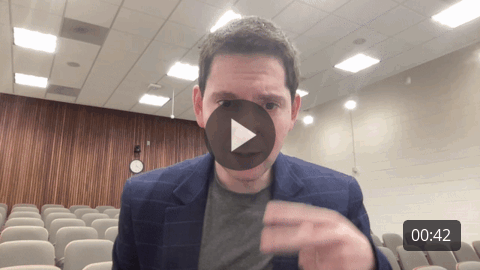Entrepreneurship Mini Course: Building Audiences, Part #2
Exploring the most effective strategy entrepreneurs can use to get new customers.
Welcome back to the first Entrepreneurship Mini Course from Entrepreneur Office Hours. This is the second in a three-part series of emails teaching a fundamental lesson about entrepreneurship. Read Part #1 here.
In yesterday’s email, I discussed how one of the biggest problems entrepreneurs face is finding new prospective customers. I also told you how one of my clients, Sam [not his real name], had just purchased a struggling cycle studio franchise but wasn’t able to turn it around using paid advertising.
Hopefully, you also remember the hypothetical example I shared about “Ralph’s Pizza” and why people would be skeptical of a paid advertisement claiming Ralph’s has “the best pizza in the city.”
Let’s expand on that same hypothetical. Imagine that, instead of seeing a billboard advertising Ralph’s, you’re hanging out with your best friend, and your best friend says: “I tried Ralph’s Pizza last night. I thought it was the best pizza in the city.”
Rather than being skeptical or suspicious of your friend’s motives, which is what happens when people see paid advertisements, you’d assume your friend was trying to share a genuinely valuable insight with you. Heck, you’d probably start thinking, “I should order my next pizza from Ralph’s.”
This is the key difference between generating leads through paid advertising versus generating leads through an audience you’ve earned on social media. Simply put, an audience you’ve earned on social media is significantly less skeptical and exponentially more receptive to what you’re selling.
This is the power Sam learned to leverage when he switched from paid ads to social media audience building.
Social media audience building
By the time I met Sam, he had less than a year of runway left to turn around the cycle studio. If he couldn’t, he was going to find himself in serious debt and be forced to return to the corporate world he loathed.
After doing some research to see what marketing strategies had been effective for other franchisees, we discovered that the most successful cycle studios in similar locations to Sam’s all had one important thing in common: amazing social media presences.
Sam decided he needed to be on social media, too. Following the same principles of social marketing and personal brand building like what I teach in my Duke classes, Sam began posting regularly on Instagram, TikTok, LinkedIn, and Facebook. Sure enough, his audience began growing.
He created and adhered to a detailed content calendar that consistently featured his journey operating the studio. The more he shared his personal story about building and running the studio, the more followers he got, and the more he was able to highlight the various events at his studio, promote discounts, showcase instructors, and engage with members of his community.
To be clear, Sam’s constant engagement across social media didn’t make him “social media famous” like a Charlie Damelio or MrBeast, nor was that the purpose. The goal for Sam’s strategy was to raise his profile within his community.
He did this because, as I’ve spent years teaching, when people enjoy social media content, they share it. This shared content reaches their networks, and it creates valuable exposure. In Sam’s case, his studio members would share Sam’s content with all their friends who were, of course, the perfect audience for Sam. Those people would get interested, and, because they’d heard about the studio from friends on social media, they weren’t skeptical at all. Instead, they were excited to join the community they’d heard so many friends discussing.
The challenge of scaling with social
With a proven model for attracting interested members, the next logical step was to take the same strategy we saw working so effectively for Sam and share it with all his cycling instructors so they could start doing the identical thing.
Each instructor was given the same training as Sam. Again, it used the same principles I teach in my Duke social marketing classes, and, again, the goal was to engage local networks to build buzz for Sam’s studio around town.
But the expanded strategy didn’t work right away. Instead, Sam found himself struggling with the hardest part of building audiences on social media.
I’m going to share that challenge and how Sam overcame it in tomorrow’s final part of the lesson, so be on the lookout for that email soon!
-Aaron




